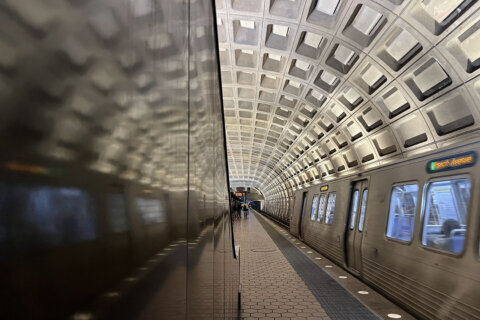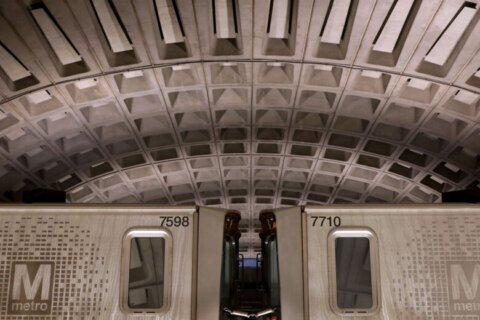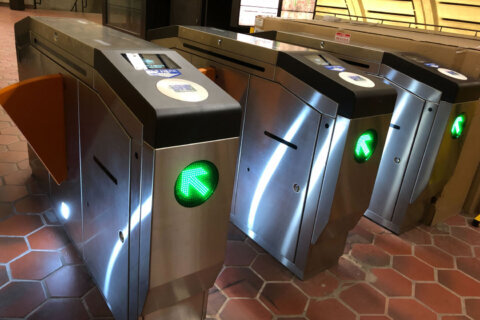WASHINGTON — Another breakdown in radio protocols and a failure to properly establish needed worker protections were two of the key causes of a dramatic near-miss last week when a Metro train almost ran over two federal safety inspectors.
Metro’s Chief Safety Officer Pat Lavin said two Federal Transit Administration inspectors and a Metro employee were in a curved stretch of track last Thursday, with another Metro worker serving as a basic watchman about 100 feet away. He said there should have been a higher level of worker protection.
A train came speeding through the area near Reagan National Airport because the train operator had misheard a radio announcement about where the work crews were, Lavin said. The rail controller in the troubled Rail Operations Control Center failed to correct the operator when he repeated back the wrong information.
It is just the latest time a radio usage problem has caused a near miss.
The train operator failed to sound the horn and appears to have been traveling well over the 10 mph speed limit that is supposed to be followed when passing workers.
After the watchman waved at the train, and the inspectors just barely jumped out of the way, the train finally stopped with the front car about 375 feet past the workers.
The back car of the train was about even with where the inspectors were standing.
While the workers immediately reported the incident, the train operator violated procedures and simply continued on after seeing that no one was hurt.
A different train operator who had sped past the work crews on the opposite track before this more serious incident was properly taken out of service for investigation.
Lavin said the requirement that trains stay below 10 mph until the whole train passes work crews “does not appear to be fully understood in the field.”
He added that turning around the Rail Operations Control Center is “a challenge.”
Metro has just concluded an outside review of potential improvements, which Lavin indicated could include reducing the number of duties each rail controller is responsible for to allow for better focus.
“We cannot guarantee anybody’s safety if the basic rules and procedures are not followed,” Federal Railroad Administration Chief Safety Officer and Metro Board member Robert Lauby said Thursday.
“This could have been a tragedy, and we could be having a very different type of meeting today,” he said.
Metro plans to start rules-compliance checks for speeding in mid-November. The Rail Operations Control Center is also now asking more safety-related questions before granting track access to workers, and automated speed limits have been imposed on the specific curve involved in this incident.
Metro management is sending a safety alert about blind spots for track workers in the system, and plans a safety “stand-down” to address proper worker protections in those areas, remind workers that they can challenge supervisors about safety issues, emphasize speed limits near workers, and emphasize the requirement to report near misses.
Federal inspectors will also get higher-level worker protection training.
“We can put some more requirements on top of the existing requirements, but, frankly, if the existing requirements had been followed, we wouldn’t have had this issue,” Lauby said.
Lavin, the chief safety officer, said Metro leaders recently met with union leaders “to foster a better safety culture, and get employee buy-in regarding safety-related matters.”
Several union members say there is a climate of distrust between top Metro management and front-line workers.







